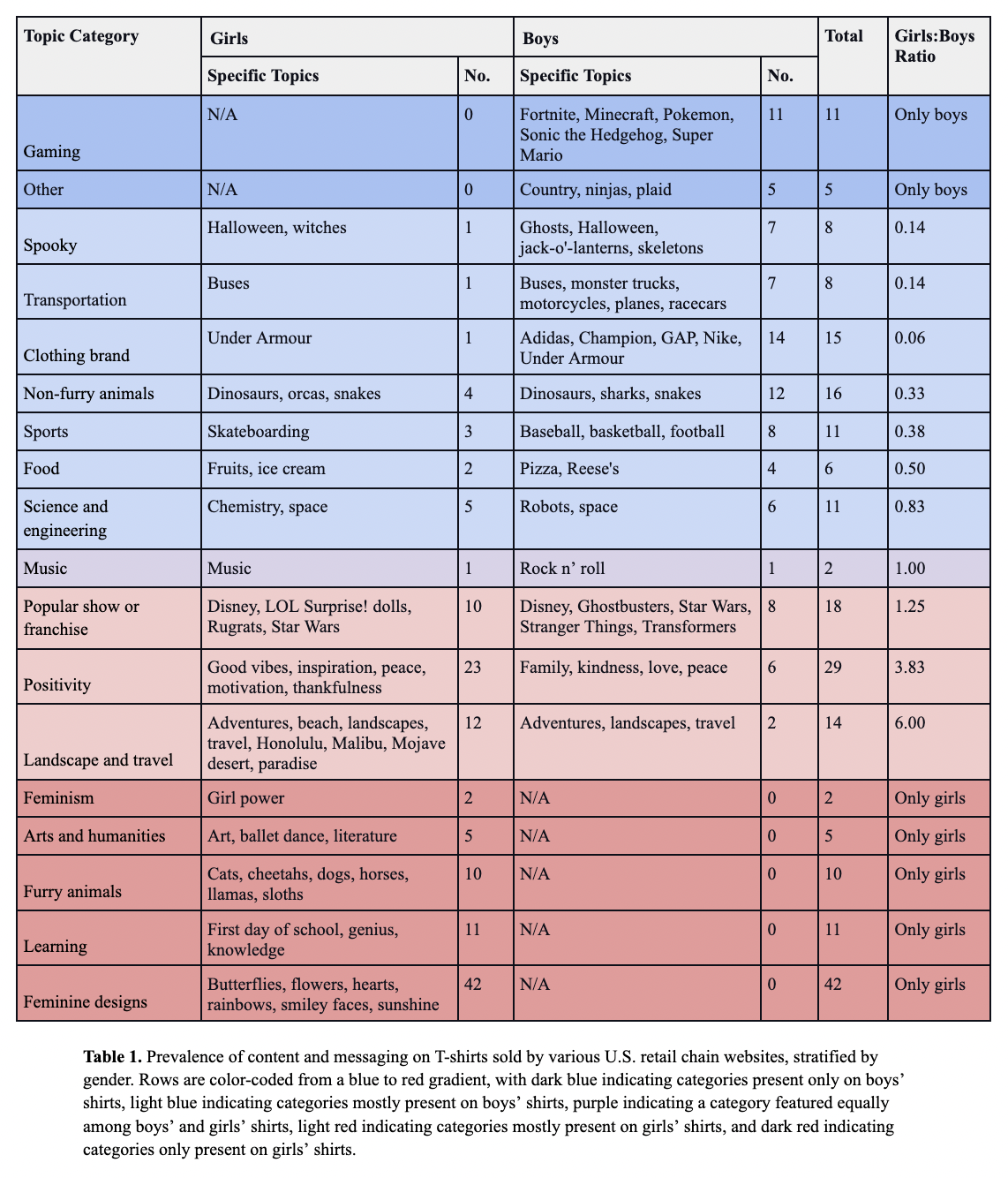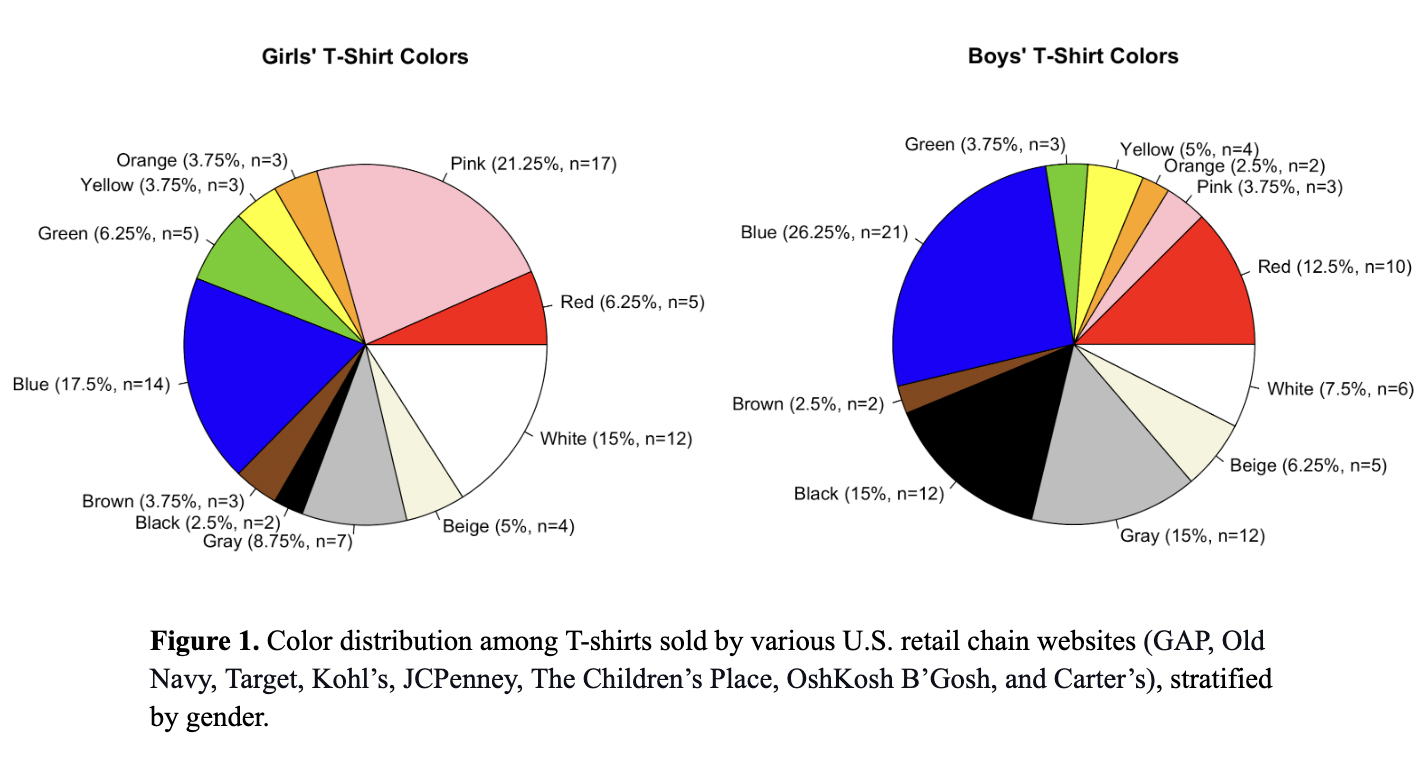General Pediatrics: All Areas
General Pediatrics 4
470 - Dressed to Impress? Assessing Reinforcement of Gender Stereotypes in Children's Clothing
Saturday, April 29, 2023
3:30 PM - 6:00 PM ET
Poster Number: 470
Publication Number: 470.217
Publication Number: 470.217
Mary O'Connor, Cohen Children's Medical Center, New City, NY, United States; Elaine X. Cheng, Cohen Children’s Medical Center, Bethesda, MD, United States; Kara Sangiuolo, Cohen Children's Medical Center, Fairfield, CT, United States; Xihang Wang, Cohen Children's Medical Center, Princeton, NJ, United States; Ananya Terala, Cohen Children's Medical Center, Suwanee, GA, United States; Fiona P. Dubrosa, Cohen Children's Medical Center, New York, NY, United States; Ruth Milanaik, Cohen Children's Medical Center, Lake Success, NY, United States

Fiona P. Dubrosa, BS BA (she/her/hers)
Visiting Scholar
Cohen Children's Medical Center
New York, New York, United States
Presenting Author(s)
Background: Although clothing is often considered a mode of self-expression, children's clothing allows caregivers to deliberately choose the way that their children are perceived by themselves and others. Most major online retailers separate children’s clothing by gender, including graphic T-shirts, which often feature specific messages. Research has shown that children are perceptive to representations of gender in media and that messaging may transmit gender stereotypes.
Objective: To compare characteristics among gendered clothing to examine underemphasized societal differences between young girls and boys.
Design/Methods: Characteristics of the first 10 children’s graphic T-shirts to appear per gender under default sorting from publicly available major US retail chain websites were assessed. The following data were collected: (1) vendor and URL to product; (2) intended gender demographic; (3) content category (e.g., sports, learning); (4) color; (5) selling price; (6) franchise licenses; (7) gender-neutral marketing. Descriptive analysis was conducted in R.
Results: 160 children’s T-shirts were analyzed: 80 per gender. The most common color for girls' shirts was pink (21%) and for boys’ shirts was blue (26%) (Figure 1). Topics represented only in one gender included: gaming (boys, 14%), arts and humanities (girls, 6%), and furry animals (girls, 13%) (Table 1). 20% of girls’ shirts and 1% of boys’ shirts featured hearts; 23% of girls’ shirts and 0% of boys’ shirts featured flowers. 10% of boys’ shirts and 8% of girls’ shirts were marketed explicitly as gender neutral. Of the gender-neutral clothing, 79% referenced popular shows/franchises. The most popular graphic featured on T-shirts were feminine designs for girls (53%) and clothing brand names for boys (18%) (Table 1).
Conclusion(s): Major retailers reinforce gender stereotypes from a young age through messaging on children’s clothing. The majority of girls’ clothing reflected stereotypically “girly” characteristics such as the color pink, hearts, flowers, “cuddly” furry animals, and feminine designs. Subjects that appeared on clothing for both genders, such as sharks, were presented in alternative ways by gender, with “cute,” innocent connotations for girls and tough connotations for boys: the shark featured on a girl’s shirt was shown relaxing in a pineapple-inflatable, while the shark on a boy’s shirt had its jaws open, ready to strike. Our findings reveal the need for widely available gender-neutral T-shirts that do not perpetuate gender stereotypes for young impressionable children.


